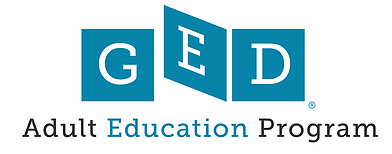Reversing the GED Jeopardy
By Andrew Greenway, 11/25/19 (Header image by GED.com)
Originally designed as a “support system” for returning soldiers in World War 2, the General Education Development certificate, better known as the GED, was developed to help students who could not or failed to complete high school.
Thus, the GED functions as a second chance. Giving individuals who may have not gotten the opportunities for a traditional high school experience a fair chance at achieving higher success. But how much of a second chance is it really?
Andrew Ryder, an Iowa State University graduate, studied the success rate of 11,675 high school dropouts who enrolled in a GED prep program during the 2003-04 fiscal year. In this often-quoted dissertation, by the end of 2009, less than a third had earned their GED. Even fewer, completed a community college credit. 229 of the initial 11,675, that’s 1.9% in the span of 6 years. (ISU, 2012)
While many would like to assume that the GED would act as a “stepping stone” to improving one’s life, either by leading to a college degree or a more fruitful career, data has shown that GED seekers still are in a cycle of struggle.
According to the National Center for Education Statistics, Iowa had the highest GED test pass rate in the nation at 98.4%. Leagues above the national average of 75.7%, yet, as we’ve seen, is still not an indicator of success. Similar high school equivalency tests pale to such success rates. (GEDTS, 2013)
The High School Equivalency Test (HiSET) achieved a national average success rate of 57.7% and the Test Assessing Secondary Completion (TASC) slightly higher at a tester pass rate of 59.8%. (ETS, DRC 2015)
But why are these well-intentioned programs struggling to equate to lifelong success?
In 2018, Illinois Central College was awarded a grant to create a program to analyze and address why so few GED graduates would pursue what many may consider the next step, college education.
Some of the instructors in the Success After the GED College Bridge Program have begun to see the patterns that have led to this “disconnect.”
As a program designed to encourage GED graduates, educate them and help them overcome their concerns about college instruction, some of the issues pressing them can be more subtle than those we would consider obvious concerns about attending college.
The “GED graduate” mindset appears to have an internal self-esteem issue, a lack of confidence or initiative because of the enormous challenge presented by obtaining the certificate.
These emotional and psychological worries may be enhanced by the real concerns of affordability. The time constraints and costs associated with pursuing college, real and perceived, may seem contradictory to their efforts of work to support themselves and others.
Thus the instructors have designed this program with these concerns in mind. The top two issues the Success After GED program tackles are financial support and self-esteem.
To address the issue of affordability, the program attempts to offer a variety of resources to support their students.
The program puts a significant emphasis on pursuing financial aid programs such as the FAFSA and PELL Grants to manage upfront costs. At community colleges such as ICC, balancing quality education with affordability is key to keeping otherwise timid students on track to success. However, they recognize it’s not only the upfront costs that are barriers to entry.
Providing for themselves and maintaining their current jobs are also key components of the affordability equation. Luckily, the Bridge program uses amenable schedules, Monday-Thursday from 8 AM-1 PM, which allow participants to still work 2nd and 3rd shift jobs while attending classes. Additionally, the program offers a “stipend” to students who attend class rather than earning part-time income.
While addressing affordability is built around the curriculum, address self-esteem and confidence is woven into the coursework.
From Accuplacer analysis intended to determine their potential in a variety of skillsets and discussions to better understand their personal ambitions to linking students with supportive figures and groups for their desired careers, the aim is to help students understand the viability of their future careers and expand their possibilities based on their personalities.
Encouraging open-mindedness and allowing students to progress in their desired field of study is key to the program’s mission and their formula is rather simple.
GED certificate; GED-College Bridge Program; college degree or certificate; a viable, desirable career; a financially stable future.
While the instructors have spent months creating what they believe to be an effective curriculum, they’re hoping to truly connect with their GED students. This emphasis of “effectiveness vs. efficiency” is what they hope will make a difference.
According to instructor Michael Vadis, “Our goal is not simply to present the curriculum but rather use it as a tool to focus the GED graduate on college coursework…If we fail in that regard, we have not been effective, merely efficient. Which may look right but, in the end, helps no one.”
The program advocates for positive changes outside the classroom as well.
Instructors attempt to help rebuild the “structure of success” in their students. This entails many different qualities of life, most of which have very little to do directly with classwork but a great deal to deal with personal values.
With one-third of their students being “work-release” individuals, a big part of the instructor’s job is to reduce the overwhelming stigma of “turning one’s life around.”
Using tools such as CareerLink to help set up workplace opportunities with “felon-friendly” companies and inviting speakers from that addresses issues of expungement, they attempt to create an environment that emphasizes “executing in the present but thinking in the future.”
They also try to address other external factors that may have negatively affected their outlook on education, like being victims of bullying or having an unstable home life, but they remind their students that they’re in control of their lives.
By breaking free from negative influences and by holding themselves up to higher values, the instructors hope that all of their students can better devote themselves to their work. Learning to cope with their anxiety, breaking cycles of depression and laziness, and committing to their work in attendance and participation are all key tenets of the program. With “90% of life is just showing up” remaining a pertinent saying in the program.
In summary, despite the sometimes grim prospects for GED students, ICC’s Bridge Program attempts to solve some of the more pressing issues by refocusing these individuals towards college and sustainable careers.
This helps not only individuals but our community. The contributions these students can make by supporting their families, energizing the economy, and reducing recidivism are worthwhile pursuits.
With the support of ICC and its instructors, they hope more GED graduates will feel encouraged to enroll in the life-changing course.

